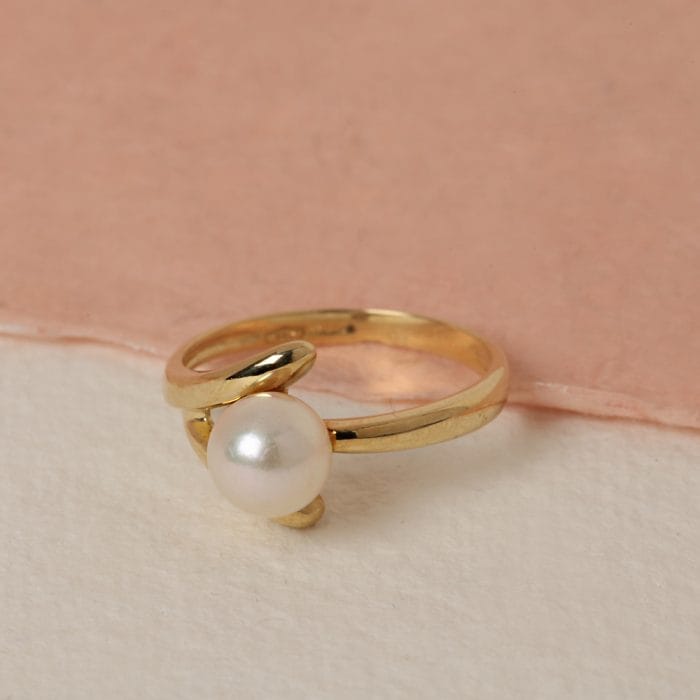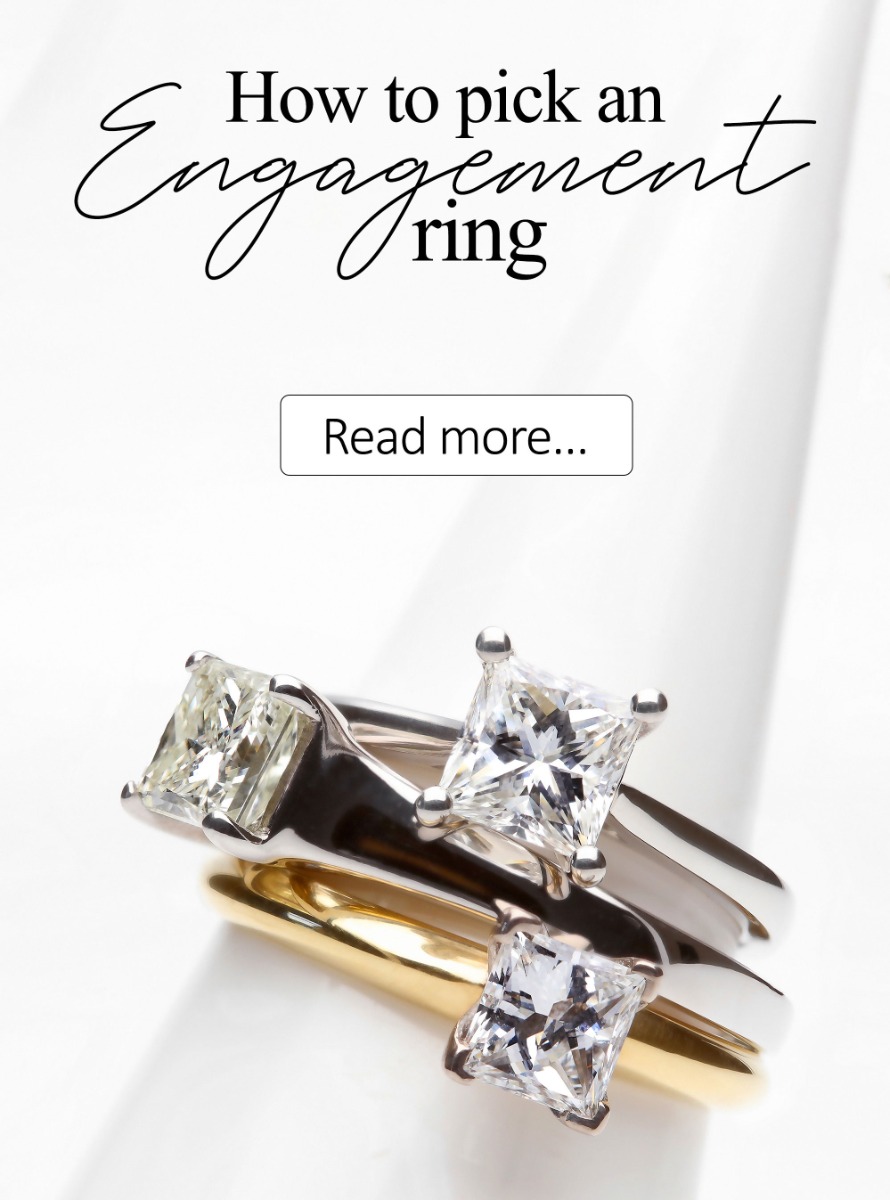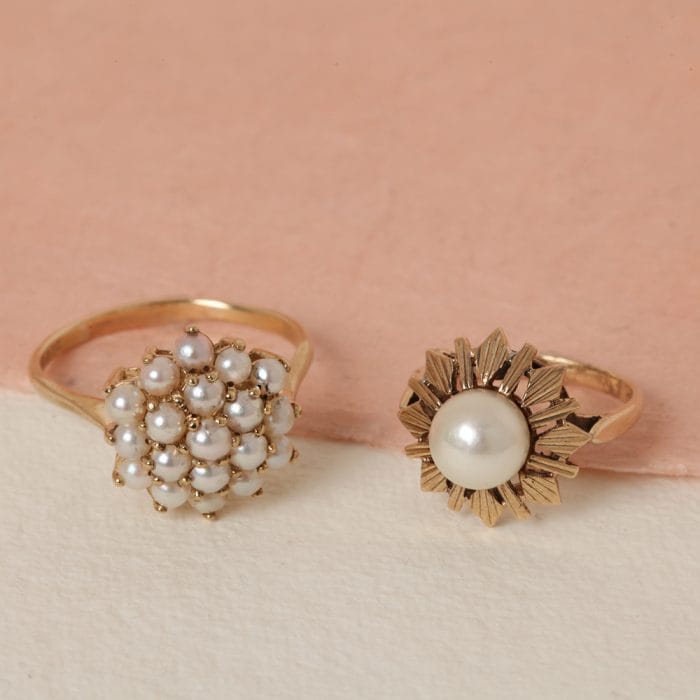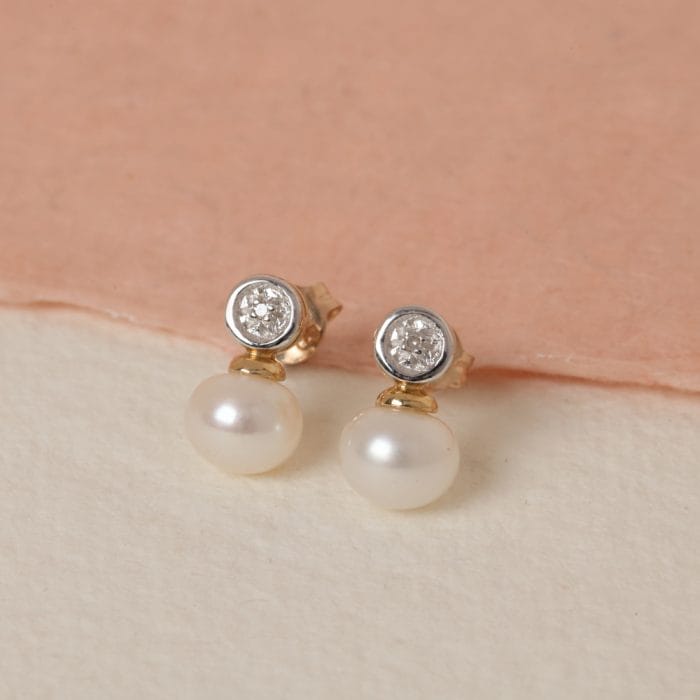June is one of only two months that has three birthstones. If you are lucky enough to be born in June, you can choose from the following three gemstones; Pearl, Alexandrite and Moonstone. However, the stone that is mostly associated with June is definitely the pearl.
The name "pearl" comes from the Latin word perna meaning "leg," which references the leg-of-mutton shape that is created from an open mollusk shell. As perfectly rounded natural pearls are so uncommon, the word "pearl" refers to anything rare or valuable.
When wearing pearls, it is said to bring you traits of modesty and purity. It is also said to increase creativity in the wearer and is associated with affection, love and generosity.
Did you know that pearls are the only gemstones made by living creatures? Mollusks make pearls by depositing layers of calcium carbonate around irritants that work their way into their shells. Many layers are built over time which is called 'nacre' and then a stunning pearl is created.
With a cultured pearl, they will go through the same process, the only difference is that the irritant is surgically implanted. Cultured pearls usually take around three years to result in a beautiful gem-quality.
Pearls used to be found in many places around the world but natural pearling is now only done in the Persian Gulf waters near Bahrain. Australia, who own one of the only remaining pearl diving fleets, still harvest natural pearls from the Indian Ocean. Most cultured pearls today are made in China. South Sea pearls are cultured along the northwestern coastline of Australia, the Philippines and Indonesia.

Back in ancient Greek times, pearls were believed to be the tears of Gods. The oldest known pearl was found in the sarcophagus of a Persian Princess who died in 520 B.C.
Japanese folktales said that pearls were created from the tears of mythical creatures like mermaids and nymphs. However, early Chinese civilisations believed that it was dragons that carried pearls. They were said to keep them between their teeth and the only way to claim the pearls was to slay them - this symbolised wisdom.
In other cultures, pearls were associated with the moon as they were known as "teardrops of the moon." Hindu folklore says that dewdrops fell into the sea from the moon and Krishna picked a pearl out of the ocean for his daughter on her wedding day.
In Tudor times, England was known as the 'Pearl Age' because of the stone's popularity with the upper class. Many portraits showed the royals wearing pearl jewellery and clothing covered in the gemstone.
In the 1900s, the first commercial culturing of saltwater pearls began in Asia, which made them a lot more accessible. Since the 1920s, natural pearls have almost been completely replaced by cultured pearls which makes this gemstone available and affordable for almost anyone.
The most famous pearl is called "La Peregina" which means 'wanderer' or 'the pilgrim.' It first entered historical records in the 16th century and it was said to be found on the coast of the Isle of Santa Margarita in Panama. At the time, it was known to be the largest pearl ever found.
This pearl was given to King Philip II of Spain as a gift. It was then gifted to Mary I by her husband Philip, and you can even see the necklace in most of her painted portraits. When she died, it was returned to him. The pearl has a long history and has made its way through royal families across Europe. Many years later in 1969, it was bought by Richard Burton for his wife, Elizabeth Taylor, for $37,000. Taylor had the piece redesigned by Cartier and added pearls, rubies and diamonds. After Taylor died, the necklace was sold in a Christie's auction for $11 million to a private buyer in Asia.
If you are looking for some pearl jewellery to gift someone for their birthday this June, or maybe it is just a gift for yourself, why not take a look at our pearl collection.














